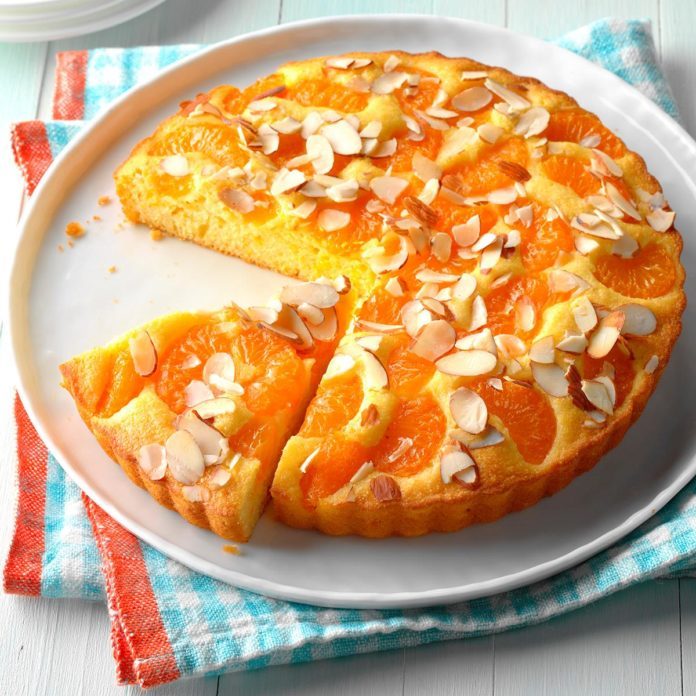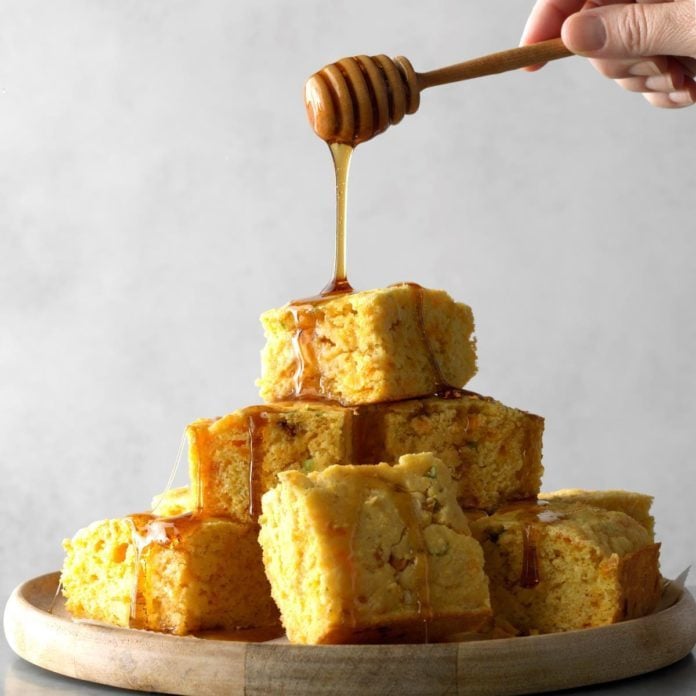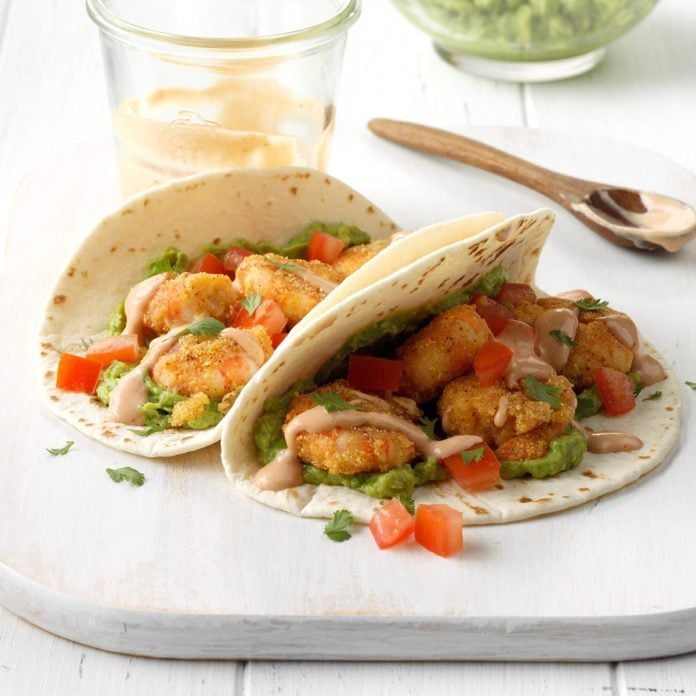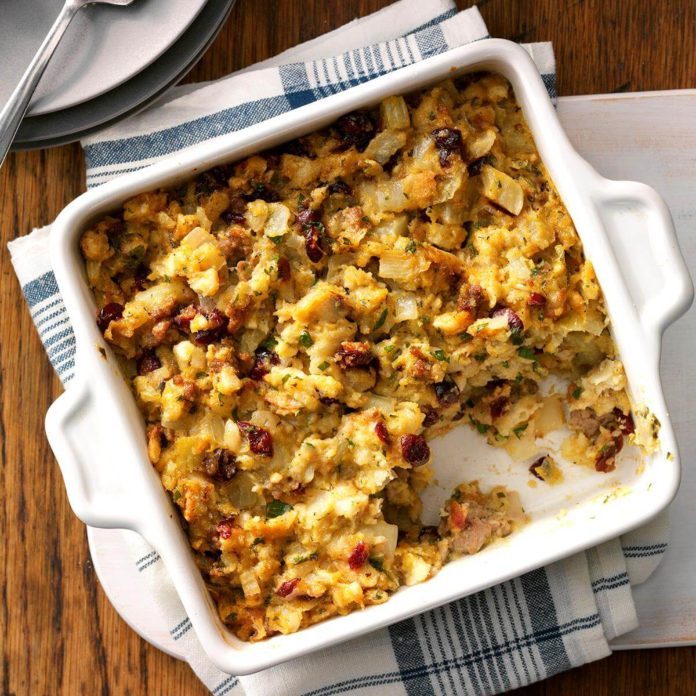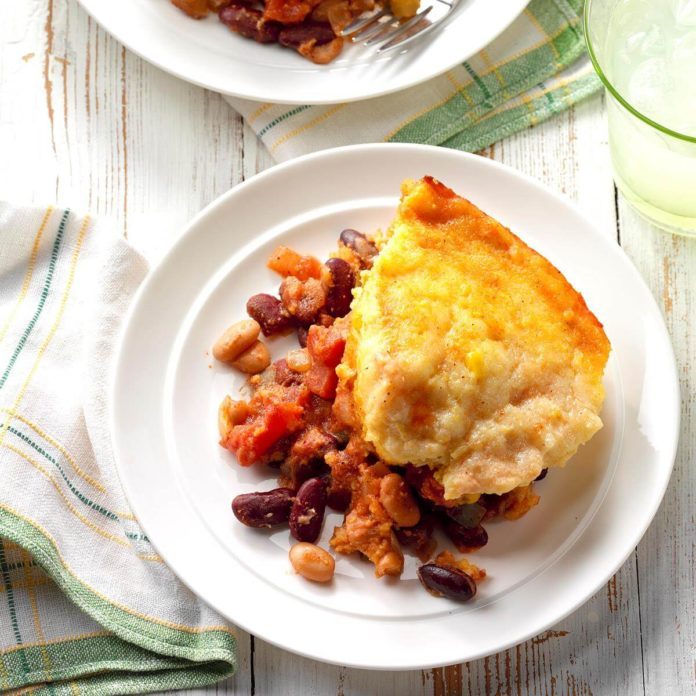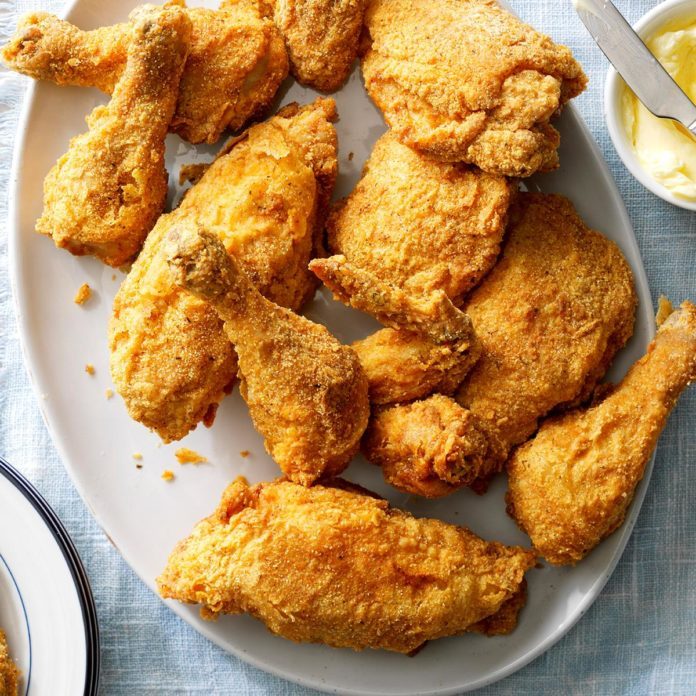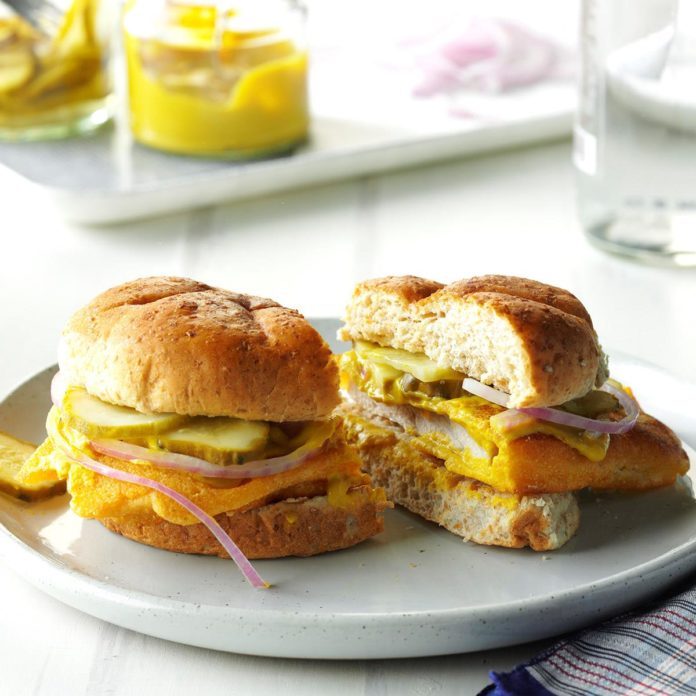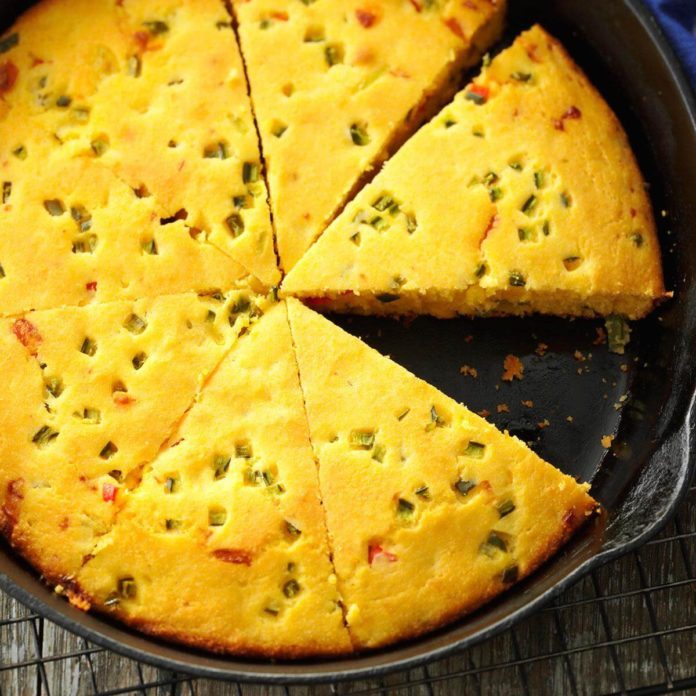Most of us are pretty familiar with sweet corn: pull back the husk, remove the silk and use it to make your favorite fresh corn recipe. Field (or dent) corn, on the other hand, is a whole different thing. This corn is starchier than its sweet cousin, so you can’t eat it straight off the cob (but livestock can!). When it is grown for people, it’s either treated with lye to create hominy or masa harina for corn tortillas, or ground up to make cornmeal, grits and polenta.
All of these items are ground corn products, but is there actually a noticeable difference between them? We take a deeper look at each one to determine when it’s best to opt for grits vs. cornmeal, and whether you can substitute grits for polenta.
Cornmeal
If you’re looking to make a killer batch of cornbread, cornmeal is your best bet. Cornmeal is made by milling dried corn. It can be ground fine, medium or coarse, although the fine-ground varieties are the most common at the grocery store. It’s usually yellow or white (the two most common colors of field corn), but it can also be blue or red, depending on the type of corn used.
Although cornbread and corn muffins are the most popular use of cornmeal, it does have other cooking applications. You could use it instead of grits or polenta in recipes, but the resulting dish will turn out smoother. We also love using it instead of flour to bread fish fillets or dusting the bottom of bread or pizza with cornmeal to keep it from sticking in the oven. If you want to do something different, try making Kentucky Spoon Bread or use it to make a sweet dessert cake.
Grits
Grits are a staple in Southern cuisine. They might look very similar to cornmeal, but they go through an additional treatment process called nixtamalization. Before it’s ground, the corn is treated with lye (sodium hydroxide) to make hominy, the main ingredient in posole. After an overnight soak, the alkaline solution loosens the corn’s hull and softens the kernels. The process also makes the corn more nutritious, releasing the corn’s niacin so it’s fully digestible by our systems. Then, the hominy is dried and ground up to make grits.
In the end, the softening of the corn kernels makes grits softer and creamier than polenta. At the grocery store, you’ll find two varieties of grits: stone ground and instant, usually available as white or yellow corn. Instant grits are partially cooked before they’re dried, so they cook up in as little as 10 minutes. Stone-ground grits, on the other hand, are a whole-grain product, so they’re more nutritious, but they take longer to cook (30 to 45 minutes).
Most people cook grits with water but add lots of butter and cheese to improve their somewhat bland flavor. You can eat them in the traditional way, or whip up a grits casserole, enjoy them for breakfast or turn them into dessert pie.
Polenta
Last but not least, polenta is similar to grits with one notable exception: the dried corn isn’t treated before it’s ground. Unlike American dent corn, polenta comes from Italian flint corn. That means the starches in polenta are harder and tend to have a slightly grittier texture (don’t worry; they still cook up creamy and porridge-like).
Most polenta recipes use stock or milk instead of water and contain herbs and other savory flavors. You can find dried polenta in the grocery store, but cooked polenta is also available in tubes. Slicing cooked polenta is a favorite way to serve this grain, frying or grilling the slices to create a tasty appetizer or side dish.
If you can’t find polenta at the store, you can definitely substitute grits. We recommend using yellow grits when making this swap, as polenta is traditionally a yellow corn product.
Can’t decide which one to make? Try them all! Explore the wide world of corn with our top cornmeal recipes.

I like to joke that these pancakes are so light, you have to hold them down! When we have a chance, we make them with freshly ground cornmeal bought at local festivals. —Betty Claycomb, Alverton, Pennsylvania
Get Recipe
Cornmeal adds a rustic quality to this delicate dessert flavored with citrus and almond. It’s sure to be a staple in your recipe collection and also makes a great holiday party hostess gift. —Roxanne Chan, Albany, California
Get Recipe
Feel free to add hot sauce to the dip that accompanies these savory corn cakes. —Katty Chiong, Hoffman Estates, Illinois
Get Recipe
I love to cook and my supportive and encouraging mom finally convinced me to submit this recipe. I often serve this corn bread with chili. —Donna Hypes, Ramona, California
Get Recipe
With plenty of ground beef and cheese, this layered bake goes over big on the dinner table. Adjust the amount of hot pepper sauce to suit your taste.—Angela Biggin, Lyons, Illinois
Get Recipe
To me, nothing sparks up a meal more than the smoky flavor of roasted green chilies. This is a quick and easy recipe, and I usually have the ingredients on hand, so when I don’t know what to fix for dinner, I make this quiche. —Linda Miritello, Mesa, Arizona
Get Recipe
My family enjoys this delicious recipe—it's like a spicy meatball stew with dumplings!—Sarah Yoder, Middlebury, Indiana
Get Recipe
I intended to make tostadas, but I misread a couple of ingredients and had to use what I had on hand. I put my own twist on a po'boy recipe and ended up with something even better. —Cynthia Nelson, Saskatoon, Saskatchewan
Get Recipe
This moist dressing is perfect when paired with poultry or even pork. The sweet-tart flavor of the dried cranberries really complements the dish's turkey sausage. —Corinne Portteus, Albuquerque, New Mexico
Get Recipe
I absolutely love tomatoes, any kind, any size. Being from the South, that includes fried green tomatoes. I created a special summer sandwich to show them off. —Hillian Holmgren, Del Rio, Texas
Get Recipe
Enjoy this easy take on a Southern specialty by using the convenient slow cooker. Here's an excellent side dish for Thanksgiving, Easter or any special feast. —Taste of Home Test Kitchen
Get Recipe
My family often requests this economical slow-cooker favorite. It's loaded with fresh southwestern flavors. One batch makes several servings—but it never lasts long at our house! —Suzanne Caldwell, Artesia, New Mexico
Get Recipe
This cornbread is richer and sweeter than others I’ve tried, and especially luscious alongside ham and beans. —Karen Ann Bland, Gove, Kansas
Get Recipe
Fresh jalapenos and blueberry quick jam make the perfect blend of sweet and spicy in this special cornbread. Once you eat one piece, you won't be able to resist going back for another. —Colleen Delawder, Herndon, Virginia
Get Recipe
This Sunday dinner staple is first fried and then baked to a crispy golden brown. Well-seasoned with oregano and sage, this classic is sure to satisfy diners at church potlucks or late-summer picnics, too. I love fixing it for family and friends. —Donna Kuhaupt, Slinger, Wisconsin
Get Recipe
Since I live near Chicago, I've managed to sample more than my share of deep-dish pizzas. This recipe lets you re-create the best of my town—right in your town! —Lynn Hamilton, Naperville, Illinois
Get Recipe
My aunt worked in Butte, Montana, and whenever we visited we had pork chop sandwiches. This recipe is a take on that old favorite. —Jeanette Kotecki, Billings, Montana
Get Recipe
If you’re from the South, you have to have a good cornbread recipe. Here’s a healthier version of my mom’s skillet cornbread. —Debi Mitchell, Flower Mound, Texas
Get Recipe
Cornbread, blueberries and maple syrup give this special dessert a flavor that’s different from any cobbler you’ve had before. I came across the recipe many years ago. —Judy Watson, Tipton, Indiana
Get Recipe
I like to spend as much time as I can with my guests when they stay with me for the holidays, so I rely on make-ahead recipes to help make that happen. Because most overnight brunch casseroles are so similar, I came up with a breakfast bruschetta for a fun change of pace. —Judi Berman-Yamada, Portland, Oregon
Get Recipe
This cake bakes up tender and light with a subtle orange taste. It tastes rich but is comparatively low in saturated fat. Serve the cake as is, or dress it up with a dollop of whipped cream and strawberries or raspberries. The cake is wonderful warm, but the flavor improves as it sits, so make it a day or two before you plan to serve it. Store the cake at room temperature. —Leigh Rys, Herndon, Virginia
Get Recipe
This recipe is quick, easy and satisfying. With its beef and corn combo, it's cozy cuisine at its best! —Erin Schneider, St. Peters, Missouri
Get Recipe
You may be surprised when you see how easy it is to make a batch of Fried Dill Pickels. Don't be surprised if they get snatched up in a flash! —Eloise Maynor, Scottsboro, AL
Get Recipe
This soup has a great southwestern flavor and is a real winner with my family. I love it because I can have the soup cooking in my crock pot, and when I get home from work, I can quickly make the dumplings and fix dinner in a jiffy.
Get Recipe
Fun-sized corn dogs add a little wow to breakfast or brunch. Kids and adults love them equally, so expect them to disappear fast. —Deb Perry, Bluffton, Indiana
Get Recipe
Anything lemon makes my day brighter and these soft cookies have a fabulous lemon aroma and a subtle lemon flavor. —Theresa Miller, Sault S Marie, Michigan
Get Recipe
My cousin is a strict vegetarian, so creating satisfying veggie dishes is my yearly self-challenge. This spoonbread can act as a side, but the addition of hearty, healthy quinoa and vegetables make it a well-rounded winter casserole. This can be an amazing Thanksgiving side dish, or a main vegetarian meal; pair with a seasonal salad. —Christine Wendland, Browns Mills, New Jersey
Get Recipe
Here's a delicious way to use the tomato bounty from your garden or the great buys from the local farmers' market. If you don't have heirloom tomatoes, try regular tomatoes with grape or plum tomatoes. —Kathryn Conrad, Milwaukee, Wisconsin
Get Recipe
Here's an appetizer that will heat up any gathering. Family and friends often request that I make these jalapenos. —DeLea Lonadier, Montgomery, Louisiana
Get Recipe
I had some fresh basil on hand and needed to find a use for it. Peering into my pantry, I saw a bag of cornmeal and figured that cornbread with a Tuscan twist would be delicious. During peak tomato season, I substitute the canned tomatoes with fresh—just remove the skins, seed and finely dice.—Michelle Anderson, Eagle, Idaho
Get Recipe
The post Grits vs. Cornmeal vs. Polenta: What’s the Difference? appeared first on Taste of Home.
Lindsay D. Mattison

